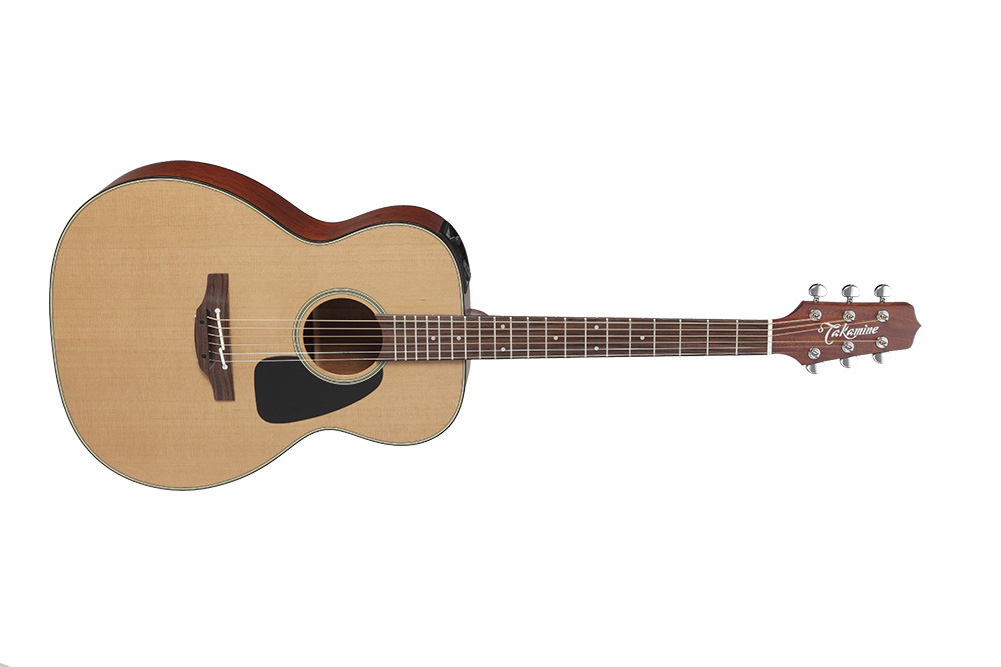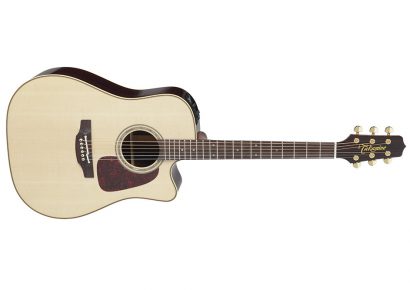TOP OF THE POPS
The P1M’s back is made of solid Sapele (the sides are Sapele too) with an X-braced solid Cedar
top (as we all know by now, solid tops get finer and more harmonically complex with age compared to a laminated top, so it’s always a good idea to look for a guitar that has this feature), a Mahogany neck, and a Rosewood fretboard with simple, elegant pearl dots. It’s a great-looking guitar with a high level of construction quality and a very comfortable neck. Most importantly, it features Takamine’s split saddle design, which allows better intonation of the whole guitar. The P1M also has chrome die-cast machine heads and, a gloss natural-finish top on satin back and sides.This model has a CT4B II preamp system, features a three-band EQ, a volume control and a tuner. It’s powered by a 9V battery and is connected to Takamine’s famous Palathetic under-bridge transducer; a clever system that passes through the top itself (instead of just being wedged between the saddle and bridge) and through the bridge plate via six individually shielded piezo-electric elements. The idea is that the signal is given the articulation of an isolated string signal and the rich harmonics of the resonating soundboard.
ORCHESTRAL MANEUVERS
The most immediately striking quality of the P1M is the level of detail and richness: right off the bat it almost sounds like a fully mastered sound that’s never too full but never too thin either. The high end is clear and articulate, which is great for helping high-string melody lines to jump out while you play lower bass and chordal accompaniment lines. The low end stays appropriately restrained and tight unless you really pummel the strings, at which point the lows open right up. These qualities are intact when you plug the guitar in as well, although naturally you’ll want to add a little ambience to place the sound in an appropriate sonic context.
TOGETHER OR ALONE
This is a great one for those who play unaccompanied as often as they play in an ensemble. It’s comfortable and playable enough to get out of your way when you’re attempting particularly tricky chord shapes, and it responds to your playing style intuitively enough that you can easily find your own voice with this instrument.

